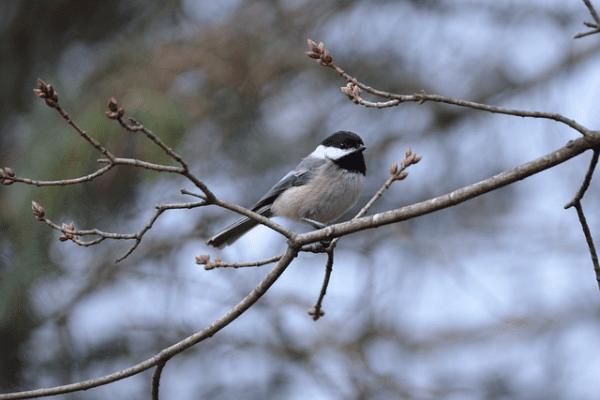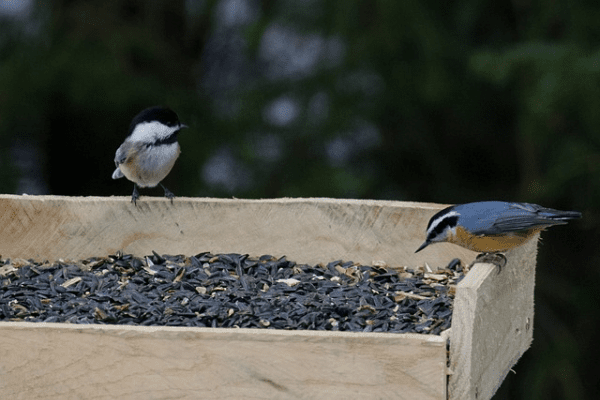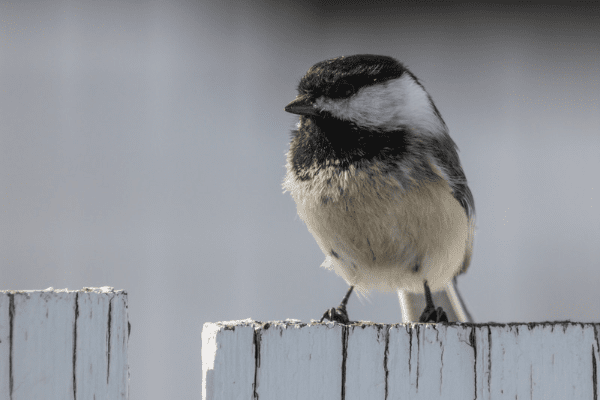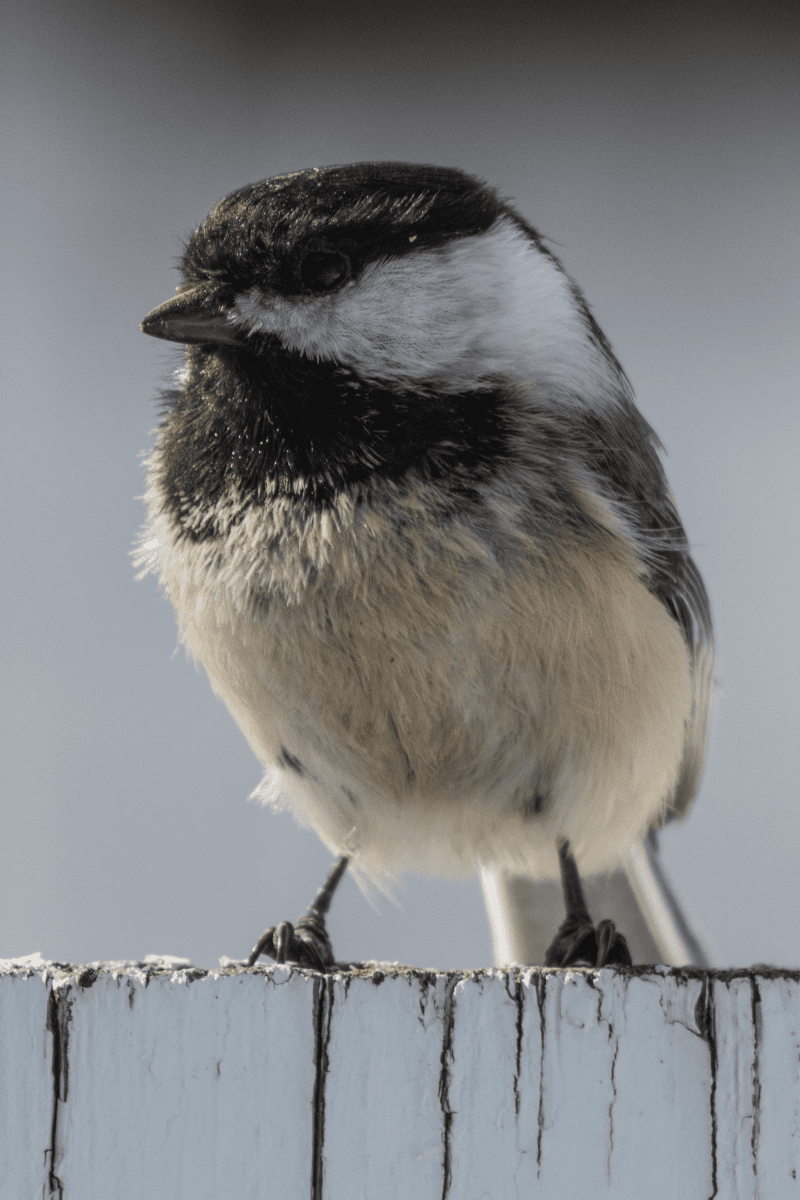Contents [show]
Are you trying to discover more information about the ability of the black-capped Chickadee to protect itself? What does it do to survive in the wild and keep itself safe from predators? You’ll learn the answers to these questions and more by continuing below.
The black-capped chickadee stays safe from predators through varying alarm cries. Sounding the alarm warns the rest of the flock. Because of warnings, flock members are safe from predators by alerting them to their presence. Their calls mobilize a defense, consisting of mobbing predators to drive them away.
Next, I’d like to tell you more about how black-capped chickadees protect themselves in greater detail below. I will also cover other related topics that will help you better get to know how these chickadees survive and thrive in the real world. The topics I’ll cover include:
- How do Black-capped chickadees defend themselves?
- How do they survive?
- Do Black-capped chickadees have predators they must avoid?
- What adaptations do black-capped chickadees have to help them thrive?
To learn about these important topics and other valuable information, please keep reading below to discover this important info.
Black-Capped Chickadee Defense 101
The black-capped chickadee never knows when a predator will suddenly appear somewhere on the horizon. But when these predators eventually enter their territory, it’s important for these little birds to remain safe.
According to NPR.org, “When they spot a predator, black-capped chickadees vary their alarm cries. The warnings help flock mates grasp the relative threat posed by the predator, researchers report in this week’s issue of the journal Science.”
The Most Effective Maneuvers
Once the black-capped chickadee lets out the call of alarm, the rest of the group of chickadees can come together, work together, and organize to create a defensive line of protection for the entire group.
What happens next? Once the chickadees have come together, they can use their mobbing tactic to drive away predators. These birds are very tiny and they do not present much of a singular threat. But their mobbing technique gives them a chance to thrive for their average lifespan.
But when these tiny birds work together in a group, they can gang up and mob potential predators together, which will definitely drive or scare them away and keep the group of chickadees safe and free from harm.
How do chickadees know when it’s time to organize a defense? These small birds will use varying calls in a number of different ways when predators get too close.
For example, when flying raptors including falcons, hawks, and owls enter their territory, this will elicit a softer call with a higher pitch. The best way to describe the call is that it sounds like they are making the sound “sweet.”
When a predator is remaining stationary but perched nearby, the black-capped Chickadee will make its signature call much louder. The signature call of this bird species sounds like its name, “chick-a-dee or chickadee-dee.”
Lastly, when nest predators like smaller raptors including the American kestrel or the pygmy-owl enter their territory, these birds have the ability to maneuver much better, which makes them excellent hunters of chickadees and other small birds.
When these birds are unfortunately in the area, they will provoke the “dees” nearing the end of the call, which lets the small flocks of chickadees know that they must mob together in a bigger group to defend themselves against the quick and maneuverable raptor.
Related article: Do black-capped chickadees use birdhouses?
Surviving The Winter

Like many of us, you’ve undoubtedly wondered how tiny black-capped chickadees managed to struggle and survive at high latitudes during the winter. Because these birds are so tiny, it almost seems like it would be impossible for this tiny species to live for its complete life span.
According to birdnote.org, “For survival, chickadees have three things going for them: they’re insulated, they’re active, and they have a good memory.”
This is incredibly important and it definitely explains why these little birds are so capable of surviving in freezing cold temperatures during harsh winters.
In fact, their coat of feathers is a half-inch thick, which gives the black-capped Chickadee the ability to maintain 100°F body temperature. They can maintain this temperature even if it’s below 0° outside, which is truly impressive.
Having a great memory is also critical to the survival of the species. Their excellent memory allows them to know where to find food including sunflower seeds, where to find shelter, and how to avoid predators that could cause them harm.
Their activity levels are also a major boon to their survival. These young chickadees are constantly moving around, flying around, and keeping busy throughout the day. This helps maintain a warm body temperature in the coldest and harshest of winters, which is definitely a must for the overall survival of this small species of bird.
Related article: Black-capped chickadee
Prowling Predators: Do Black-Capped Chickadees Have Predators That They Must Avoid?
The black-capped chickadee has a wide range of predators that will hunt it in the wild.
According to information shared on nwf.org, “Hawks, owls, and shrikes capture adult chickadees, but nestlings and eggs are in more danger of being consumed by tree-climbing mammals. A chickadee’s alarm call sounds just like its name. Chickadees warn their flocks of nearby predators by sounding out ‘chickadee-dee-dee!’”
Overall, the most dangerous predators of these birds and their breeding range include hawks and the northern strike, which both hunt other birds.
Additionally, they really have to watch out for squirrels, mice, chipmunks, weasels, and snakes. These creatures are notorious for sneaking into chickadee nests, which leaves the young birds vulnerable and also gives them the ability to easily eat the eggs.
Weasels are particularly nasty when it comes to adult female chickadees during egg laying. They will often kill them in the nest while the female incubates, which can become tragic because the young birds will no longer have their mother to feed and care for them.
It’s important to keep chickadees safe and protected. They eat lots of insects, which allows them to naturally control the insect population. They also have beautiful movements and songs, which help bring the forest to life.
| Predators of the Black-Capped Chickadee | Species Type | Carnivorous? |
| Cats | Small mammals | Yes |
| Chipmunks | Rodents | Yes |
| Squirrels | Rodents, small mammals | Yes |
| Snakes | Reptiles | Yes |
| Hawks | Raptors | Yes |
| Owls | Raptors | Yes |
| Mice | Rodents | Yes |
| Northern Shrikes | Songbirds | Yes |
| Weasels | Small mammals | Yes |
What Adaptations Help Black-Capped Chickadees Thrive?

The black-capped Chickadee has a solid black Is very easily noticeable. They are willing to nest in nest boxes and dead trees, but they have specific adaptations that allow them to survive and thrive even in the most difficult winters.
Their most important adaptations include the following:
Altering Territorial and Feeding Behaviors Over Time
This particular adaptation is incredibly beneficial to these chickadees because it allows them to survive in the coldest winter conditions. According to St. Lawrence Lowlands, “They are known to alter their vocalization, flocking behavior, breeding territories, food sources and caching storages over the year.”
By making these changes or alterations, the black cap mixes things up enough to thwart unwanted attention from predators while keeping their food sources, food stores, caches, and territories safe and sound in the winter woods.
Eating at Bird Feeders
These small birds do not use bird feeders all year long, but we’ve observed that they are willing to eat black sunflower seeds during the fall. They will even take these bird seeds from the bird feeder and cache them in coniferous trees for later use.
It’s interesting to watch these birds gather seeds from bird feeders and trees. In fact, they actually fly upside down with their bellies pointing in the air in an effort to extract seeds from cones and branches using their beaks and claws, which is impressive, to say the least.
Chest Muscle Adaptation
Believe it or not, the black-capped Chickadee has an adaptation in its chest muscle that helps this bird survive and stay warm during the winter. As the bird is in flight, it will inflate its chest muscle. This inflation allows the Chickadee to have an additional source of heat production, which is important when it’s incredibly cold outside.
Food Storage
The ability to gather and store food is incredibly important in great adaptation for the black cap Chickadee. It gets really difficult to find viable food sources during the cold and stormy winter months when the weather is really bad.
But these chickadees give themselves ample time to prepare, by going around to different bird feeders in the area to take the sunflower seeds and cache them throughout their entire woodlands. Their excellent memories also allow them to find their food caches with the greatest of ease, which is an absolute must and a major necessity for their survival.
According to the University of Puget Sound Slater Museum of Natural History, “They are such efficient foragers that they can find enough food to sustain them even in the short winter days of high latitudes.”
Excavating Nest Cavities
Next, these chickadees also possess the ability to excavate nest cavities on their own, usually by digging out dead wood during the breeding season. This task is specifically performed by the lack-capped Chickadee female, and it usually takes her a few days to complete.
Once complete, these hole-nesting birds will complete breeding season and lay their eggs inside the relative safety of the nest cavity. This will help keep them safe from predators, which is an absolute must if they want their young brood of 6-8 chicks to survive and thrive.
Body Temperature Lowering
Another adaptation that helps keep these chickadees alive is that they can survive and thrive in cold winter areas because they are well adapted to these conditions.
At night, this bird with a solid black cap can lower its overall body temperature. By lowering its body temperature, it can preserve energy because staying warm requires a lot of energy. This is incredibly efficient and a very effective way to survive on limited food sources even when it’s freezing cold outside because the low temperatures will not bother them too much.
They Remain Mostly Nonmigratory
Finally, this last adaptation is beneficial to their survival because pairs of chickadees remain in the same territory during the spring and summer months. But they will join up with a flock during the winter. They will spend their time in breeding territories, and then when they eventually form flocks, they will even join with kinglets, nuthatches, and other mixed species.
These larger flocks are absolutely advantageous to their survival because the more birds in the flock, the more eyes they have watching for predators. It gives them a chance to spot and survive attacks from small hawks, owls, Northern shrikes, and other flying predators.


